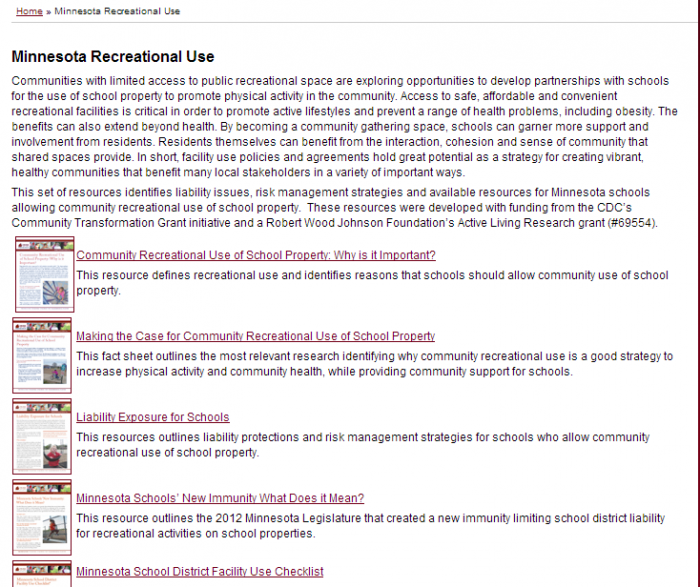Communities with limited access to public recreational space are exploring opportunities to develop partnerships with schools for the use of school property to promote physical activity in the community.
Access to safe, affordable and convenient recreational facilities is critical in order to promote active lifestyles and prevent a range of health problems, including obesity. The benefits can also extend beyond health. By becoming a community gathering space, schools can garner more support and involvement from residents. Residents themselves can benefit from the interaction, cohesion and sense of community that shared spaces provide. In short, facility use policies and agreements hold great potential as a strategy for creating vibrant, healthy communities that benefit many local stakeholders in a variety of important ways.
This set of resources identifies liability issues, risk management strategies and available resources for Minnesota schools allowing community recreational use of school property. These resources were developed with funding from the CDC’s Community Transformation Grant initiative and a Robert Wood Johnson Foundation’s Active Living Research grant (#69554).

